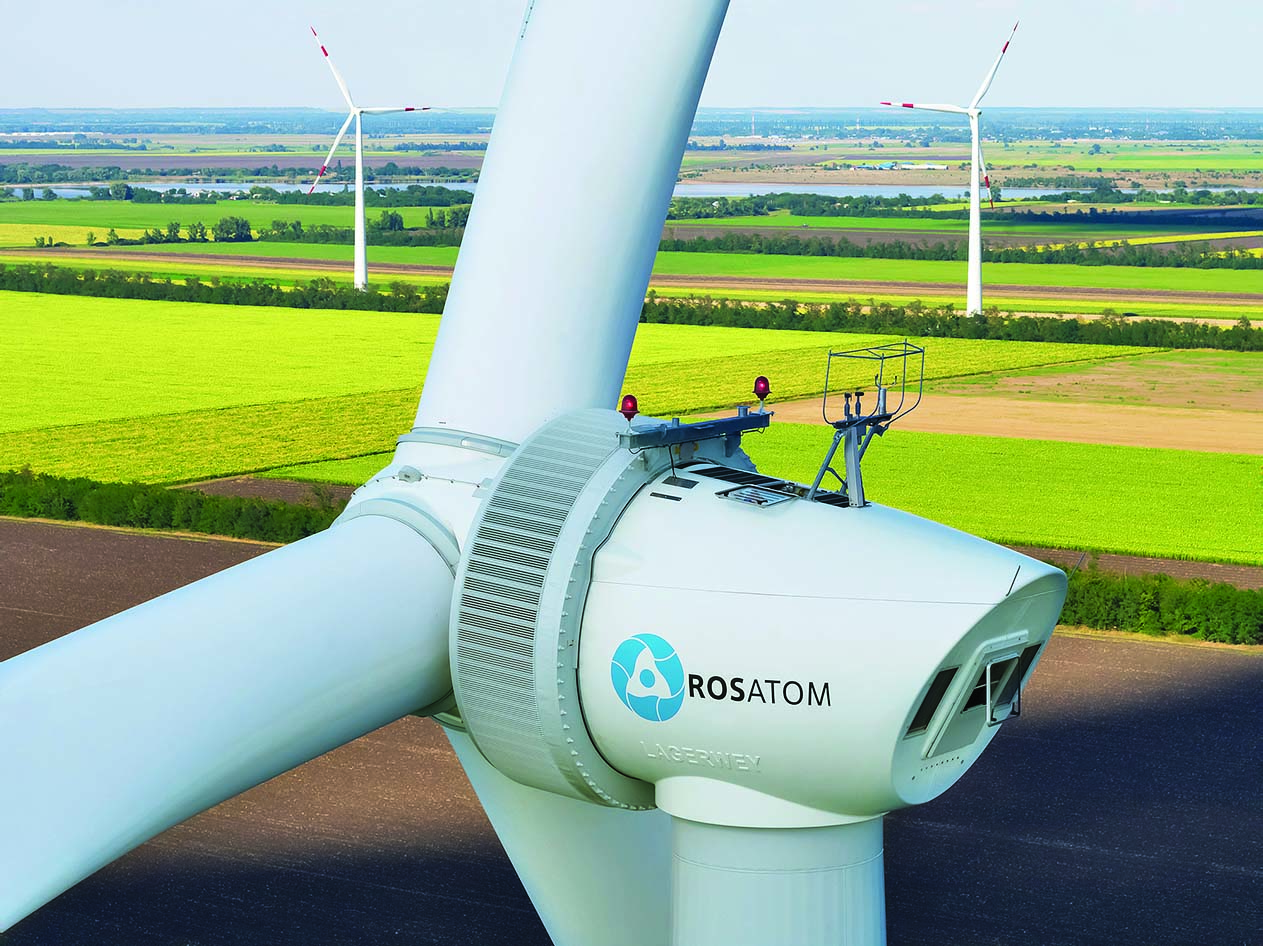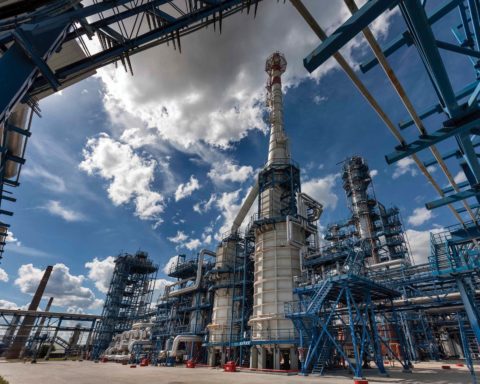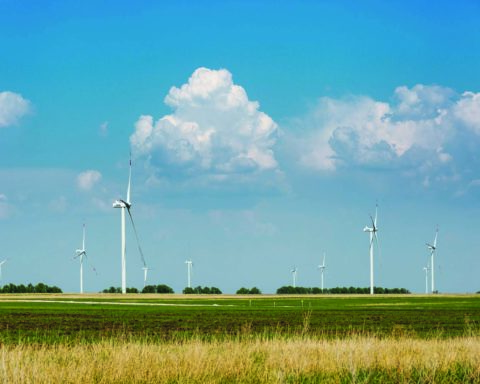Anatoly DMITRIEVSKY
Scientific Director of the Institute of Gas Research Institute of RAS, Academician of the Russian Academy of Sciences
e-mail: a.dmitrievsky@ipng.ru
Nikolay KOMKOV
Head of the Laboratory of the Institute of Economic Forecasting of the RAS, Doctor of Economic Sciences, professor
e-mail: komkov_ni@mail.ru
Maria KROTOVA
PhD, Associate Professor, Senior Researcher at the Institute of National Economic Forecasting of the RAS
e-mail: mw_krotowa@mail.ru
Justification of the need for a resource-innovative strategy for economic development and the implementation of its capabilities
The strategy for overcoming the crisis of the 1990s in the Russian economy, proposed by the staff of the Institute for Economic Forecasting of the RAS and the Institute of Oil and Gas Research Institute of RAS, was focused on using the export potential of the country’s oil and gas complex to modernize the entire Russian economy on an innovative and technological basis [1, 2]. It was expected that high world prices for hydrocarbons exported by Russia to world markets would be able to concentrate investment potential for the development of processing industries adjacent to the extractive industries (oil refining, oil and gas chemistry, etc.), as well as manufacturing companies, including machine tool building, mechanical engineering, electronics, infrastructure (transport, communications, construction, etc.).
Fundamental changes in the economic mechanism of economic management that occurred during the transition from planned command management to the use of market mechanisms and the interests of mining companies that received the rights of economic management of their assets significantly limited the possibilities of centralized redistribution of the investment potential of resource-extracting industries to other sectors of the economy. This circumstance and the natural difficulties of modernizing the processing and processing industries on an innovative and technological basis, the elimination of which was initially possible due to the import of technologies and equipment, made it difficult to modernize the entire domestic industry. The experience of modernisation based on domestic innovative solutions and technologies, despite certain successes, did not become a systemic, decisive factor in transforming the structure of the Russian economy and sustained high rates of its growth.
The global financial crisis and sanctions against Russia have limited the access of many domestic companies to cheap loans in EU countries. Herewith, from the very beginning of its formation, the Russian financial sector was concerned with building up its own assets, the profitability of which exceeded the profitability of many industrial companies by 2-3 times.
The totality of the difficulties and objective reasons (COVID-19) have led to a prolonged stagnation of the Russian economy, starting in 2014, and which continues to this day.
To overcome the economic downturn, Russia, pursuant to many economists, has sufficient potential and good market prospects. In order to overcome the inertia of crisis phenomena, in our opinion, the domestic economy needs a concentration of intellectual, financial and technological resources to jump into the space of new opportunities that can be created on the basis of reforming a number of economic structures, ministries and departments, scientific and financial institutions in order to transition to strategic planning and economic management within the framework of the project approach.
A consistent increase in the volumes of oil produced (1993-1999, an average of 340 mln t annually) and natural gas (1993-1999, an average of more than 580 bln cub.m) provided more than half of the state budget, which allowed Russia at the beginning of the XXI century to pay off for external debts and move to sustainable economic development in the period from 2000 to 2008 at an annual rate of about 7% of GDP.
However, the stable, long-term development of the economy of a country like Russia, with its vast territory and reserves of resources, could not continue on the basis of the existing export-raw material strategy. The possibilities and necessity of the transition of the domestic economy to the knowledge economy based on innovations and new technologies were considered within the framework of the resource-innovative development strategy. Herewith, under market conditions, the status of many monopolies and companies, even with state ownership, did not allow direct redistribution of funds between sectors of the economy. Therefore, the main flows of redistributed finances became possible through tax deductions and their concentration in the country’s budget, followed by its distribution on the basis of the budget code.
Moreover, in the early 21st century, which, pursuant to a number of economists, was viewed as a “fat period”, government officials did not have any intention of restructuring the economy and its subsequent diversification. The steady growth of the RF GDP at the beginning of the first decade of the 21st century and sufficient resource availability for the future allowed the government to fully ignore the possible risks and limit itself to the accumulation of foreign exchange funds in the reserve fund. The global financial crisis of 2008-2009, as well as the fall in the growth rate of world oil prices, sharply reduced the country’s GDP to the level of 1-1.5%. Since 2014, after the imposition of sanctions by the USA and the EU countries, almost zero economic growth has gradually turned into a protracted economic crisis, during which the level of investment in the country’s economy has almost halved, and household income since 2014 has decreased by 7% compared to 2009 year. According to the country’s leading economists Aganbegyan A.G., Ivanter V.V.,
Glazyev S.Yu., Shirov A.A. and others, the low growth rates were influenced by many reasons, including the erroneous policy of the financial authorities, the lack of positive government strategic guidelines and low export potential for non-primary goods. Even the successes of the oil and gas sector, the positive revival of the country’s agricultural potential, the consistently high potential of Rostec and Rosatom could not reverse the negative trends in the Russian economy.
Experience and possibilities of using the potential of resource-innovation strategy for the transition to the knowledge economy
The search for a possible replacement of the export of resources for the export of high-tech products was initially focused on creating a system for financing innovative development based on venture funds and attracting large Russian companies to finance them [4].
An analysis of the possibilities to quickly master the potential of the knowledge economy based on mass support of venture capital structures and small enterprises first of all indicates that domestic companies are not ready for innovative development based on the use of domestic scientific and technological potential.

Significant volumes of imports of machinery, equipment and food (the volume of imports of these goods in 2010 amounted to more than USD 180 bln) allowed for government structures and companies to hope for the short duration of the changes that took place in the global economy and the possibility of a quick return to the previous rates of growing demand and high global resource prices. The decline in global hydrocarbon prices has prompted government officials to turn to a diversification strategy for the economy and consider increasing non-commodity exports. However, the low share of GDP in the processing and manufacturing sectors of the economy and the low technological level of companies in these sectors impeded the development of exports of their products.
The study of the dynamics of the interaction of the main economic sectors (mining, processing, processing, final products), distributed within the full technological cycle, allows to assess the existing level of progressiveness of the technologies used and at the same time to identify promising opportunities for improving the achieved level. To analyse the distribution of the economic contribution of the sectors that form a complete technological cycle, it is convenient to use estimates of the volume of products produced by the main types of economic activities as per the All-Russian Classifier of Economic Activities (ARCEA) [5]. Fig. 1. presents the distribution of GDP shares by economic sectors for 2010 and 2020, as well as their perspective distribution for 2030.
Analysis of the dynamics of the distribution of the shares of GDP in the mining sector indicates a decrease in the share of resources in the total volume of GDP. Over the 10 years from 2010 to 2020, this share decreased by 10%. It is also expected that the resource component in GDP will decrease by 2030, which, first of all, indicates a possible increase in the volume of processing and manufacturing industries.
An increase in the share of manufacturing industries and at the same time a decrease in the production of FER, on the one hand, is associated with a possible decrease in the volume of unprocessed resources (crude oil, unrefined natural gas, round timber, rough diamonds, etc.), and on the other hand, an increase in capacity and the number of technological conversions in the processing and manufacturing industries of the domestic industry. Their implementation on innovative technologies can create conditions for the production of modern high-tech technology and equipment.

Source: hbr-russia.ru
The increase in the variety, properties of products manufactured by industrial companies and the economy is closely related to the number of orderly used technological conversions. Technological redistribution is a set of interrelated technologies focused on the production of products of a certain quality with specified properties.
Formed and established at the beginning of the XXI century, the principle of convergence of technologies [6-8] presupposes the design of future technologies based on the combination and interaction of various processes within the framework of “nano-info-cogno-bio” processes or NBIC. This presupposes the formation of technologies at the nano level, the ability to interact with related areas based on information processing, to adapt and tune in to interaction with other processes, including the operation of living systems. Examples of such technologies already exist, for example, sensor technologies for smart wells, smart homes and unmanned vehicles, robot networking, face recognition in their group interaction, etc.
Each additional technological redistribution (when extracting resources – 3-5 redistributions, during processing and processing – 5-7 redistributions) requires the use of new technologies that are consistent with related ones. The lengthening of technological redistributions is always associated with intellectual property rights, with significant material costs and personnel training for additional professions. Such costs during efficient technological modernisation not only pay off, but can also provide significant additional profit, since the cost of final processing products, for example, in petrochemistry, increases several times, when processing wood, it increases 2-4 times, and the conversion of diamonds into polished diamonds increases their value by 3-5 times, etc.
The added value increases with an increase in the number of technological conversions, which is especially noticeable in the example of high-tech processing and manufacturing industries, and is often associated with increased quality requirements: the purity of the materials produced, the accuracy of processing machine parts, the conjugation of individual units, etc. Therefore, the intention of the government and the management of many companies to increase the number of technological conversions and thereby increase the final cost of products is quite understandable, but their acquisition and development requires additional material and intellectual costs, which often complicates and even hinders the accelerated modernisation of these companies.
Herewith, a possible increase in the share of manufacturing industries’ GDP shall be attributed to the number of progressive structural shifts between industry complexes. This will allow not only to reduce the volume of imported machinery, equipment and vehicles (in 2018-2019 – USD 113 bln), but also to ensure their export to the CIS countries and to non-CIS countries. Restoring the potential of the manufacturing industry shall first of all be the most important goal of modernizing the domestic economy. Without the production of domestic modern competitive machinery and equipment, independent technological development of the Russian economy is impossible. To achieve this goal, it is necessary not only to provide large-scale support to the basic industries of this complex (machine tool, mechanical engineering, instrument making, robot manufacturing, electronics, electrical industry), but also to create preferential taxation of their industries. Herewith, mechanisms shall be proposed and conditions shall be created for the flow of investment funds from other sectors to the processing industries.
In recent years, there has been a transformation of the goals and potential of the economic development opportunities inherent in the resource-innovation strategy. Limitations of the prospects for the use of hydrocarbons have become climate change, dependent on carbon dioxide emissions and the increasing role of the non-carbon economy. Such restrictions, as well as the prohibitions of the EU countries and the USA on the supply of oil and gas technologies for the development of hard-to-recover reserves, shall inevitably force the government to raise the issue not only of import substitution of such equipment, but also to consider, considering the interests and potential of the entire FEC, the technological possibilities of producing equipment for the production of renewable sources energy (RES), as well as equipment for energy-saving technologies in all sectors of the economy.
Energy strategy of Russia
The energy strategy of Russia for the period up to 2035 was approved by the Government in 2020. Compared with the previous versions of the strategy, its legal status has increased significantly, since its provisions will, pursuant to Order No. 1523-р, be guided by the executive authorities at the federal level and at the level subjects of the Federation in the development and adjustment of state programs of the appropriate level. This is a fundamentally new moment, since the previous versions of the Strategy were adjusted depending on the situation in other components of the national economy of the Russian Federation.
The purpose of the development of Russia’s energy sector is, on the one hand, to maximize assistance to the socio-economic development of the country, and on the other hand, to strengthen and maintain Russia’s position in the global energy sector, at least for the period until 2035.
The fuel and energy complex must make its contribution by 2024 and contribute to other sectors of the economy in achieving national goals and solving strategic
problems of the country’s development, determined by decree of the President of the Russian Federation No. 204. Therefore, when implementing the strategy, contradictions of a technical and legal nature between the sectoral and project management of the FEC were excluded.
The strategy follows in line with global, long-term trends in the development of the FEC, which, in turn, are viewed as a special modernisation transition. Its landmarks include:
• structural diversification, within which carbon energy will not be replaced, but supplemented by non-carbon, centralized energy supply – decentralized, the export of energy resources – the export of Russian technologies, equipment and services in the energy sector, the range of applications of electric energy, liquefied natural gas, gas motor fuel, hydrogen and petrochemical products;
• digital transformation and intellectualisation of the sectors of the fuel and energy complex, as a result of which all processes in the energy sector will acquire a new quality, consumers of products and services of the sectors of the fuel and energy complex will receive new rights and opportunities;
• optimisation of the spatial distribution of the energy infrastructure, within the framework of which oil and gas mineral resource centres, petrochemical complexes will be formed in the Eastern Siberia, the Far East and the Arctic zone of Russia, the infrastructure for the transportation of energy resources will expand, and the Russian Federation will become a leading player in the markets of the Asia-Pacific region;
• reducing the negative impact of the industries of the fuel and energy complex on the environment and adapting them to climate change, as a result of which Russia will make a significant contribution to the transition to low-carbon development of the world economy, to international efforts to preserve the environment and counteract climate change.

Source: energybase.ru
The relevance of developing their own energy strategies for countries rich in natural resources becomes obvious against the background of how Western countries are united by the desire to reduce their dependence on energy imports, which leads to contradictions in assessing the prospects for energy supply in the future.
According to an estimate by Shell Energy Asia (2018), global energy demand will increase by 60% by 2060, while the energy sources themselves will be subject to significant restructuring [9]. Achieving a 1.5 °C reduction in global temperatures will require massive energy technologies with virtually zero greenhouse gas emissions, which shall be in operation before 2050.
Moreover, pursuant to one of the heads of the Eurasia Group (USA), the volume of gas supplies for export from Russia over a comparable period of time will not only be stable, but structurally ensure the base level (the so-called baseload) of fuel needs for consumers in both Western and Eastern countries.
That is, decisions on investing in them at the level of fundamentally oriented developments and technology prototypes must be made already in the 2020s. When analysed in detail, the consolidated point of view of countries and companies that import natural resources turns out to be internally contradictory. The fact is that an increase in the overall level of environmental friendliness of energy and industry is possible only in the context of expanding the use of natural gas. This, obviously, can hardly be combined with the inefficiency of wind and solar technologies, as was the case in the frosty and snowy winter of 2021 and the forecast that more than half of the available gas reserves would remain in the Earth, and without specifying their categories (which include the currently explored time reserves and resources).
The current energy situation, potential and infrastructure of Russia as a country with fundamentally different resource and foreign trade conditions than those of Europe, Japan and even China, do not dispose to forcedly following the course of “decarbonisation” and “greening” of the entire FEC. Nevertheless, the transition to RES in various country’s regions is gradually gaining momentum.
In the 1980s-1990s, the practice of interdisciplinary, international scientific research in the field of strategic management and risk control was extended with the English word Challenge as a notion having no exact Russian analogue.
For instance, pursuant to the definition of A. Toynbee [10]: “… a challenge is something that cannot be opposed and resisted. The challenge encourages growth. By responding to the challenge, society solves the task that has arisen before it, thereby transferring itself to a higher and more perfect state in terms of the complexity of the structure”.
The FEC of Russia, despite a number of non-standard phenomena caused by the crisis of 2020, is able to form the basis for the development of the domestic economy relying on its own strength. It is not only a matter of the tendency of countries with rich hydrocarbon reserves towards “resource nationalism,” but also of new mechanisms of pressure by importing countries on producing countries.
Gas, which is the most important part of the FEC and the export and energy potential of Russia, is becoming an instrument of the most complex foreign trade, economic and political contradictions and disputes. At present, it is important to consider the desire to green the energy sector in countries that do not have significant reserves of natural resources not so much as an end in itself, but as the formation of a new lever of pressure on traditional gas suppliers. This trend is not new, since 2008, with the adoption of the Third Energy Package, there has been a constant search for a balance of forces and interests between importing countries and gas companies in Western Europe.
The basis for the formation of development goals are forecasts of socio-economic development in the medium term.
Forecasts are based on an analysis of the current state, global and Russian trends in socio-economic development, opportunities to overcome existing and expected in the future “bottlenecks”, including major challenges [4]. Formation of a sequence of actions for the transition from forecasts of socio-economic development to a list of projects at the macro level on the basis of a targeted approach will provide a synergistic effect from the implementation of strategic plans.
The strategic plan at the macro level should be based on forward-looking, well-resourced projects, and project objectives should be consistent with national objectives. Strategy, as a resource management tool to achieve long-term goals, has a specific meaning for various world economies. Herewith, a distinction is made between the European approach that has developed in the EU countries (Germany, France, Great Britain) and the eastern approach adopted by a number of APR countries (Korea, Japan, modern China, etc.). In the EU countries, the preferred strategy is based on the consistent implementation of the intended goals, considering the possibility of using the results obtained in the formation and achievement of new goals. In eastern countries, the main emphasis is on the harmonious development, where different components of development (economy, industry, social development, ecology, etc.) are considered. If we evaluate the planned and implemented tasks of the development of Russia from these positions, then the adopted strategies can be conditionally called progressive-returning [4], when it was not always possible to achieve results in full, and partially achieved results were not used to substantiate and achieve new goals.
In the future, when forming an innovative development strategy for our country, it is desirable to use European and Eastern approaches, and the development strategy should be adaptive and harmonious, combining the strengths of its resource and high-tech potentials, ensuring their intersectoral interaction and capable of considering the development prospects of the main components in the process of its implementation: economy, society, science and technology, ecology and interests of future generations.
Strategy of scientific and technological development of Russia
The FEC of Russia in 2019 in all sectors, and these are 9 former Soviet ministries, achieved record indicators. Naturally, the crisis year 2020 falls out of the general trend in the development of the FEC in recent years.
By Decree of the President of Russia No. 642 dated December 1, 2016, the Strategy for Scientific and Technological Development of the Russian Federation was approved. By Decree of the Government of the Russian Federation No. 162 dated February 19, 2019, the Rules for the development, approval, implementation, adjustment and completion of complex scientific and technical programs of the full innovation cycle (CCTP) and complex scientific and technical projects of the full innovation cycle were adopted.
The Ministry of Energy of Russia, together with oil and gas companies, prepared information on topical areas of research and implementation of innovative technologies. The analysis of the information received allowed to establish that the most promising direction for the implementation of technologies is to increase the efficiency of the development of large, giant and unique deposits in the Western Siberia.

Source: Rosatom
Council for the Priority Direction of Scientific and Technological Development of the Russian Federation “Transition to environmentally friendly and resource-saving energy, increasing the efficiency of extraction and deep processing of hydrocarbon raw materials, new sources, methods of transportation and storage of energy” (Chairman of the Council – at that point the President of the RAS academician V. E. Fortov) November 29, 2018 approved the formation of a comprehensive scientific and technical program of the full innovation cycle “Digital and technological modernisation of the world’s largest West Siberian oil and gas production centre.”
Similar comprehensive scientific and technical programs of the full innovation cycle are at the final stage of development and cover all sectors and sub-sectors of the Russian economy. The implementation of programs of a full innovation cycle will allow solving scientific, technical and socio-economic problems and obtaining world-class results through the development and implementation of innovative technologies within the framework of priorities, certain strategies for the scientific and technological development of the Russian Federation.
The transition to the innovative development of the country is impossible without the creation of an integral system, the basis of which is fundamental science. Fundamental science provides new knowledge about nature, man and society. The obtained scientific results are the scientific basis for innovative technologies.







